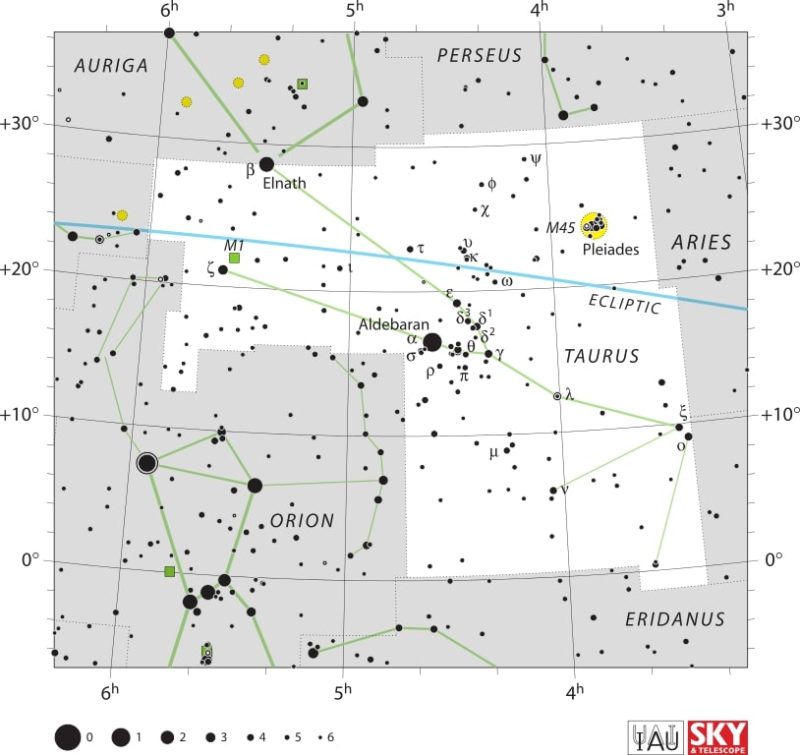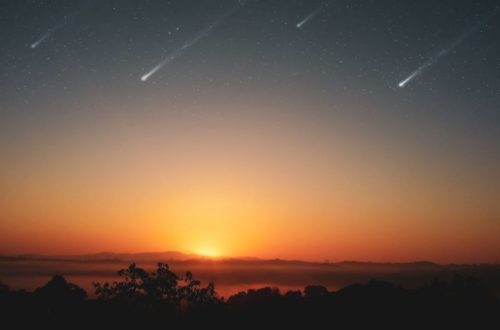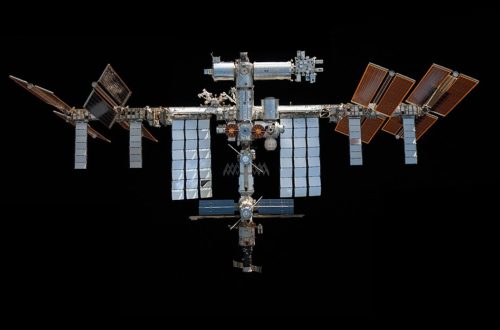Northern Taurid Meteor Shower Guide

Northern Taurids are a long-lasting, minor meteor shower that occurs every year, peaking on November 12 and visible best from the Northern Hemisphere. These meteors come from a stream of debris left in the by asteroid 2004 TG10. They move very slowly across the night sky, so they are easy to observe.
Normally, the shower is a consistently pleasant but minor shower, producing only around five meteors per hour at its peak. Other years may produce fewer bright fireballs, which are spectacular, but harder to notice since they stand out and therefore attract attention. Clear, dark skies, preferably in locations far from city lights, will provide the best opportunity to view them.
Of all the meteor showers, the Northern Taurids are unique due to their impressive, slow-moving, colorful meteors. The next part of this article explores what makes the shower tick. It offers pointers for observing and keeping safe while you’re watching the skies.
What Are the Northern Taurids?
The Northern Taurids are a quiet meteor shower, with a reputation for spectacular bright fireballs and a relatively sparse shower with about 5 meteors per hour at the peak.
You can view this shower each year from October 20 to December 10, with peak activity on November 12.
As Earth passes through the Northern Taurids debris trail cast off by asteroid 2004 TG10, the Northern Taurids can be quite a show! This spectacular event continues to mesmerize novice stargazers and experienced astronomers.
If you’re looking for a uniquely fall experience, the Northern Taurids are one of the best things going in the night sky each autumn.
Distinguishing Northern vs. Southern Taurids
The Taurid meteor shower is actually split into two branches: the Northern and Southern Taurids. Both occur at nearly the same time each autumn.
They have slightly different peak dates though. The Northern Taurids peak on November 12, with the Southern Taurids peaking roughly a month earlier. With both showers, the rates are very low and almost indistinguishable at the peak.
Each branch has its own distinct debris trail. The Northern Taurids are associated with asteroid 2004 TG10, and the Southern Taurids are related to Comet Encke.
Understanding the Taurid Complex Stream
The Taurids are several meteor streams associated with Comet Encke, which could be part of a larger ancient comet that broke up millennia ago. Asteroid 2004 TG10 may also be a fragment of Comet Encke that broke away as well.
The Northern and Southern Taurids are the most familiar portions of this complex, but other lesser-known smaller streams are present. Swarms of debris cover a large swath of sky.
As Earth travels along its orbit, we cross through different portions of this cloud at different times of the year, producing two separate Taurid showers. The dispersion of this debris leads to some years being more fruitful for fireballs and other years being less intense.
Unlike most other meteor showers, the Taurid complex has some interesting characteristics. Its long duration and great fireball activity are what makes it especially amazing.
Why They Appear So Slow
Taurid meteors are relatively slow when they enter Earth’s atmosphere, traveling at around 29 km/s. While that seems speedy, it is quite slow relative to other prominent meteor showers.
The angle at which Taurid meteors enter the sky makes them appear slower, giving observers more time to watch each fireball cross the sky.
Because Taurid meteors are larger and travel more slowly, they can appear more spectacular. This unique combination means they linger longer and appear much brighter than meteors from faster showers.
As a result, the fireballs can be seen for several seconds and often leave glowing trails that catch a lot of attention.
The Taurid Swarm Phenomenon
Every few years, we see a Taurid “swarm,” with increased meteor and fireball activity. These swarms occur when Earth passes through a denser section of the Taurid debris field.
When the conditions are just right, these waves can come pretty close to a meteor storm level outburst.
The swarm effect draws attention to the ongoing nature of debris fields, with change and movement being a constant factor. It’s these fields that are creating these amazing meteor showers.
Spotting the Northern Taurids: My Viewing Guide
The Northern Taurids present a rare opportunity for meteor observers to witness slow, bright meteors that are easy to spot. These are the meteors you really notice as they move more slowly across the sky. Consequently, they remain visible much longer than meteors from other showers.
Make sure to arrive prepared and select the best location. Understanding what you’re seeing will turn an ordinary watching evening into a fascinating adventure. This guide is intended to provide you with the most accurate information and helpful advice. It’s intended for everyone who wants to get the most out of this annual phenomenon.
Finding Dark Skies
The brightest meteors will be visible at their best, away from city lights. Artificial light from urban and suburban areas will obscure all but the brightest Northern Taurids. To catch the most, look for designated dark sky parks or rural areas with a reputation for dark skies and stargazing.
In the US, there are incredible locations such as Cherry Springs State Park located in Pennsylvania and Big Bend National Park in Texas. Idaho Dark Sky Reserve is known for its expansive, dark skies and lack of artificial light. A lot of state and national parks post stargazing articles on their official websites.
DarkSky International’s dark sky maps can help you identify the best viewing locations. Even in densely populated regions, driving just an hour away from the city can make a big difference in what you see.
Gear You Need (Or Don’t)
You definitely don’t need any fancy gear to have a great time with the Northern Taurid meteor shower. The essentials are simple: a blanket or reclining chair, warm clothes, and maybe a thermos. Comfort is key, because meteor viewing usually involves being sedentary for long stretches.
Telescopes and binoculars are great, but not really for meteor watching. They have little value in helping you enjoy meteor showers. Meteors move fast and cover great distances of sky, so your best tool is the naked eye.
Many meteor hunters bring cameras with a wide-angle lens and a tripod, hoping to capture a meteor on video. This is not required and not at all necessary to enjoy the show. The important thing is to be warm and comfortable and have your eyes on as much open sky as possible.
Patience: The Stargazer’s Virtue
Meteor showers, particularly the Northern Taurids, are a great lesson in the virtue of patience. You may experience long stretches with no meteors; this is expected. Many people come with friends, snacks, or music to help make the time go by.
Reclining and allowing your eyes to adapt to the darkness helps you see the dimmer meteors. Another great thing about the Northern Taurid meteors is how slowly they move, making it easy to track each one. Many of these meteors are bright enough that they skip across the sky, even in sub-optimal viewing conditions.
Savor the peace and stillness. Often, the most rewarding experiences are worth the wait.
How Weather Affects Your View
Clear skies are essential for any meteor shower. Any amount of cloud cover or even a high dew point will obstruct your view, so always consult a weather app or local forecast before you go out. Almost every weather website has hour-by-hour cloud cover forecasts—use them to select the clearest night.
Once you see that conditions will not provide a good view, stay flexible and plan to attempt another evening. Since the Northern Taurids stretch over several weeks, there’s usually another opportunity.
The Magic of Northern Taurid Fireballs
Fireballs truly are the stars of the Northern Taurid meteor shower. These are meteors that blaze hundreds of times brighter than your average shooting star. For those of us fortunate enough to watch this night sky, fireballs are the biggest allure to this shower.
What Makes a Meteor a Fireball?
A meteor is designated a “fireball” when it reaches the brightness of Venus or brighter. Typically, fireballs are even brighter than this, occasionally outshining all but the moon.
When a larger or denser space rock enters the atmosphere, it heats up and ignites. As it breaks apart, it glows with a spectacular light. These meteors don’t just blaze across the sky in a blink—they are longer lasting, sometimes leaving behind a visible trail or even smoke.
That’s what makes them so much easier for casual stargazers and die-hard meteor lovers to spot.
Why the Northern Taurids Produce Bright Fireballs
The Northern Taurids are unique in that their meteoroids are high in rock and metal, due to their origin from asteroid fragments. Those pieces of space junk burn slow and bright as they enter our atmosphere.
Their slower speed, when compared to other showers, adds to this magnificent show. Good weather and clear skies go a long way towards showing off this spectacular display.
Conclusion
The Northern Taurid meteor shower appears every autumn, filling the night sky with dramatic, slow-moving fireballs. People all over the world can see these meteors in early November. Science may refer to them as a minor shower, but those large, luminous streams ensure that each viewing is worth the anticipation. The darker the skies are, the less moonlight, and the wider your view of the sky, the more you’ll see! No special equipment required—just a lawn chair, a hot beverage, and some patience.
Bring a friend or three, join us in looking up, and enjoy the show. Catching the Northern Taurids in action can make an otherwise ordinary evening into a beautiful experience that you’ll remember forever. Have a story or tip from your own Taurid watch. Leave it down in the comments and tell us your after dark sky stories.
Frequently Asked Questions
What are the Northern Taurids?
The Northern Taurid meteor shower is active from late October until early December. They peak on November 12 and are perhaps most well-known for producing exceptionally bright fireballs.
Why are Northern Taurid fireballs so bright?
Northern Taurid meteoroids tend to be larger than most, which can help account for the brightness. When they hit Earth’s atmosphere, they burn up spectacularly, creating large glowing fireballs.
How many meteors can I expect to see per hour?
Just 5 meteors per hour during peak Northern Taurid activity. Though fireballs are relatively few and far between, they tend to be very memorable.
Do I need special equipment to watch the Northern Taurid meteor shower?
All you need are your eyes and a dark, open sky. You do not need binoculars or telescopes.
Are the Northern Taurids dangerous?
No, the Northern Taurids are not dangerous. Like many other meteor showers, the meteors are mostly harmless, burning up high in the atmosphere and not reaching the ground.
See also:
- Previous meteor shower: Leonis Minorid Meteor Shower
- Next meteor shower: Leonid Meteor Shower
Would you like to receive similar articles by email?





